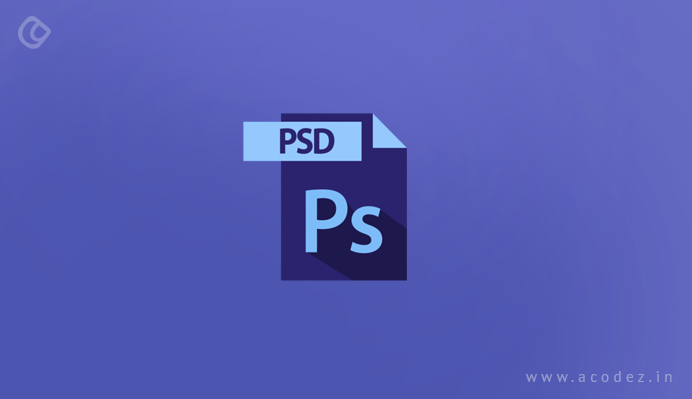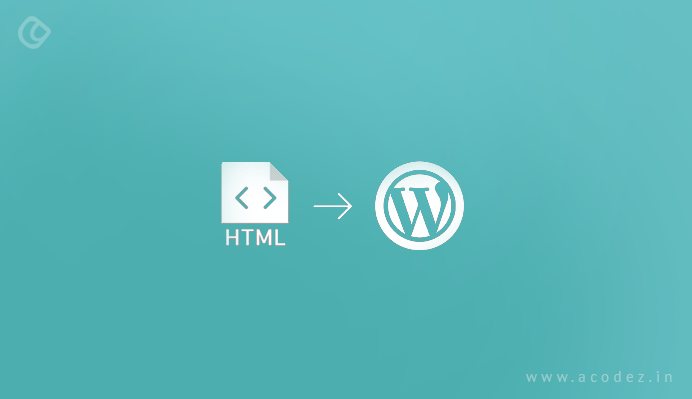Well, you might be quite aware of the fact that numerous thousands of websites are being developed daily across the web. And within these numerous websites, a handful of the websites are powered by WordPress. This means that businesses would have to put up with a fierce competition from their peers no matter the effort, time or money they invest in setting up their website; its marketing or promoting it to the next level.
To be honest, everything starts with a first impression – it is how your website manages to impress the people at the first shot. If they are impressed at their first visit, then they go further – if not, rest is the end of the story. This means that your website design principles should be unique and exhibit a difference between what each of the others has got. Moreover, you should ensure that it is capable of adding values to the lives of the end user, which is our ultimate aim.
If you think you do not have much time to spend on creating a site from the scratch, we offer you an offer that you cannot resist checking – why not convert PSD to WordPress, and use the customized and unique theme that will create the magic we wanted all this time. As you might be aware, the web emphasizes three different standards of designing a website theme, which include the WordPress, Photoshop Design (PSD) file and Twitter Bootstrap.
Many people haven’t still started implementing Twitter Bootstrap for their business requirements. But, we would like to make it clear that this framework is one of the recent choices of experts and professionals for creating responsive sites. And here, we are going to provide you with guidance on how to convert PSD to WordPress theme in 5 simple and easy steps.
One of the biggest questions that we should be answering is why convert a PSD file into WordPress theme.
To understand this better, it is important that we provide you with insights on what exactly is PSD and WordPress.
Let Us Get Started With PSD

Anyone who is familiar with web design and development and the industry specifics as a whole is well aware of what exactly is a PSD. It might take some time for people with no background in the related field to understand further about these, just as it might be difficult for them to in fact to interpret what exactly do terms, including padding, leading, typography and others stand for.
But the point is it is very easy and simple to understand what it exactly means. If you have been reading through our insights thoroughly, you might have answered this question by now – as it stands for Photoshop Design. The point here is that this single piece of software is what graphic designers and web designers take an equal interest in. This is mainly because it is that aspect upon which the foundation of WordPress website designs is rooted.
Next, Let Us Take a Further Look at WordPress Themes
Whenever a WordPress website is designed, the main building blocks comprise of the appearance of the website (design) and the information provided on the site (content).
WordPress is considered to be one of the most preferred content management systems (CMS) when it comes to creating a website. It features content that stays uninfluenced by the website’s appearance – which is what makes it the choice of designers.
The WordPress theme has a vital role in determining the appearance of the website. Just as you can customize themes for desktops, laptops or smartphones – to fit and flow through flexibly across these devices – similarly with a WordPress theme, you can ensure that the content can be skinned to endorse it with an appearance and experience, which you deem fit for the larger audience.
Let Us Skim Through WordPress Themes in Depth

WordPress themes comprise of PHP files. And these carry the specific commands, which actually determine the styles, icons, fonts, colors, and the size of headers, text, and buttons. Not only the aforementioned aspects, but all the other elements undergo the expected change. Now the cost of the theme – it is not much expensive, just $25 and there are others that you can acquire free of cost as well. You need not choose the theme that is already in use by another product, but custom chooses another one to fit into your needs. This is where the conversion of PSD to WordPress themes comes into the real picture.
Now Let Us Take a Look at all the Steps for Converting PSD to WordPress Theme
Step 1: Slicing the PSD File
If you refer to any of the already tutorials or other guides, etc., you would realize that ‘slicing’ is where it starts when we are working on the PSD to WordPress conversion process. Are you concerned about the usage ‘slicing’ – it might seem to be a little complex, but very easy once you master the art. Slicing is the process of cutting and dividing a single image file into multiple image files. Within each of these files, there will be varying elements that together corroborate to form the entire design. Isn’t it easy?
There are references to this process as splicing as it is capable of creating separate elements from one design. This will be then reorganized or fused and transformed into a completely fresh new design. Another point that you should be wary about this is that there is no option to code a template or theme from a single image design file. So in this procedure when you are designing a web page, you have to first start with slicing the main image file into numerous different image files and then finally collate all these together, leaving no doubt that it was once sliced and then stitched up into one.
There are a number of tools, such as the GNU Image Manipulation Program, with which you can slice up the image. But, Adobe Photoshop is the most commonly preferred tool that most web and graphic designers choose to slice. It is easier and faster as it offers a number of tools, including the Layers and Layer Masks, which further help with extracting the Metadata. And, then blending all these into RAW images. In the end, what matters is whether the tool that you were using was able to render pixel-perfect image file, which contains the varying elements of your external design.
Where do you start slicing? Look for the elements, such as background, headers and separators, and footers, while others follow. In fact, some of these elements including the color of the header or footer and even the background color need not be sliced as there is an option to create these dynamically. Slice elements that cannot be fused in dynamically, such as buttons and images.
Step 2: Time to Create Index.html and Style.css

The next step is to move a little further from the design to programming. You need not panic if you are not an expert at programming – as this is indeed simple and easy. Now you have a PSD design that has been sliced out and from this, you can generate an HTML and CSS frameworks template, static in nature. At this stage, you can add names to the index.html and Style.css files as it would come in handy later.
You can easily get this done using software such as the Fireworks and Dreamweaver. But, we recommend that having the basic knowledge of HTML and CSS would do more good than harm at any point in time. You can always find help online – on sites such as W3School, the Tutsplus and other developer communities that impart knowledge regarding web page designing.
Now with the help of index.html and the corresponding CSS file, arrange and position all the images and components into their place. Here you can implement responsive web design to ensure that your site appears great from all angles and is compatible across various screens.
Step 3: Breaking Down the index.html into a WordPress Theme File Structure

You already have the basic template ready. All that you need to do now is to import it to the WordPress environment. Before you start this, it is pertinent that you have knowledge on how this can be organized in WordPress. As you might be well aware, WordPress comes with a specific file structure that a designer is expected to implement. Here, you need to upload your web page to WordPress themes and during this phase, the WordPress software should work hand in hand with the theme, allowing the plugins and additional functionalities to be implemented without any complexities. Based upon the WordPress standard file structure, break your index.html file into the corresponding. PHP files.
Apart from the index.php and style.css files, a WordPress theme usually comprises PHP files, which are mainly applicable for headers, archives, sidebars and footers. So it is important that you have the basic knowledge of PHP as well.
Step 4: Next, You Can Add WordPress Tags
We are almost there. Now, you have to import the inbuilt functionalities within the WordPress into your theme files, using a little help from the WordPress tags. Once these tags are added, you have successfully completed creating the WordPress theme. After you add up the necessary tags and functionalities, the next step is to place all these files into a single folder. You can assign a name of your choice to these files. Once done, place the folder within —-/wp-content/themes/ folder, which you can find in your WordPress installation. Run a test and check if everything is working fine. If yes, then you can possibly activate your custom theme from the WordPress dashboard. Now, you have one of the world’s coolest and unique custom-made design.
Step 5: Let us Add Functionalities

Now, you have successfully accomplished the creation of your custom WordPress theme from the PSD file. But in fact, you can always check for options and improvise your design. You can add new functionalities to your custom-made theme as you learn further about this.
Once you gain experience with this, you will realize it is not rocket science – but something you achieve with ease. In fact, you can find a number of sources online to improve your knowledge.
Acodez IT Solutions is a web development company in India offering web design and development services along with mobile app development solutions. We are also an SEO agency based in India offering A to Z digital marketing solutions that will help take your business to the next level.
Looking for a good team
for your next project?
Contact us and we'll give you a preliminary free consultation
on the web & mobile strategy that'd suit your needs best.











